I’ve received a lot of questions recently about how I optimize my blog posts for SEO (Search Engine Optimization). The reason for that is because I basically built my entire photography business on blogging. I had no former marketing experience, yet I started booking up my calendar with weddings because of my online presence.
So how do you optimize blog posts for SEO so that your website shows up in searches? I’m excited to show you what I’ve been doing for the past 10 years and what has been working really well for me.
1. Decide on a keyword.
A keyword is a word or a phrase that people type into search engines (like Google) to find what they are looking for. The key is to make sure you use a keyword that people are actually searching for. You can use “your name photography” all you want, but if people don’t know you, they are not going to be searching for you by your business name. What I want you to do is go to Semrush.com and create a free account. Then use their “Keyword Magic Tool” to find the volume (how many people are searching) of that keyword. The more searches a keyword gets, the better chances you have of people landing on your blog post.
So let’s take one of my most recent weddings for example. A few weeks ago I shot Micki and David’s wedding at East Lynn Farm in Round Hill, Virginia. By using Semrush, I noticed that I would want to title my blog post something like “East Lynn Farm Wedding”, instead of something like “East Lynn Farm VA” which only gets 10 searches a month. Do you see why doing a little bit of keyword research can have a great impact? Also, the little green circle means that the keyword is fairly easy to rank for on the first page of Google. Win!
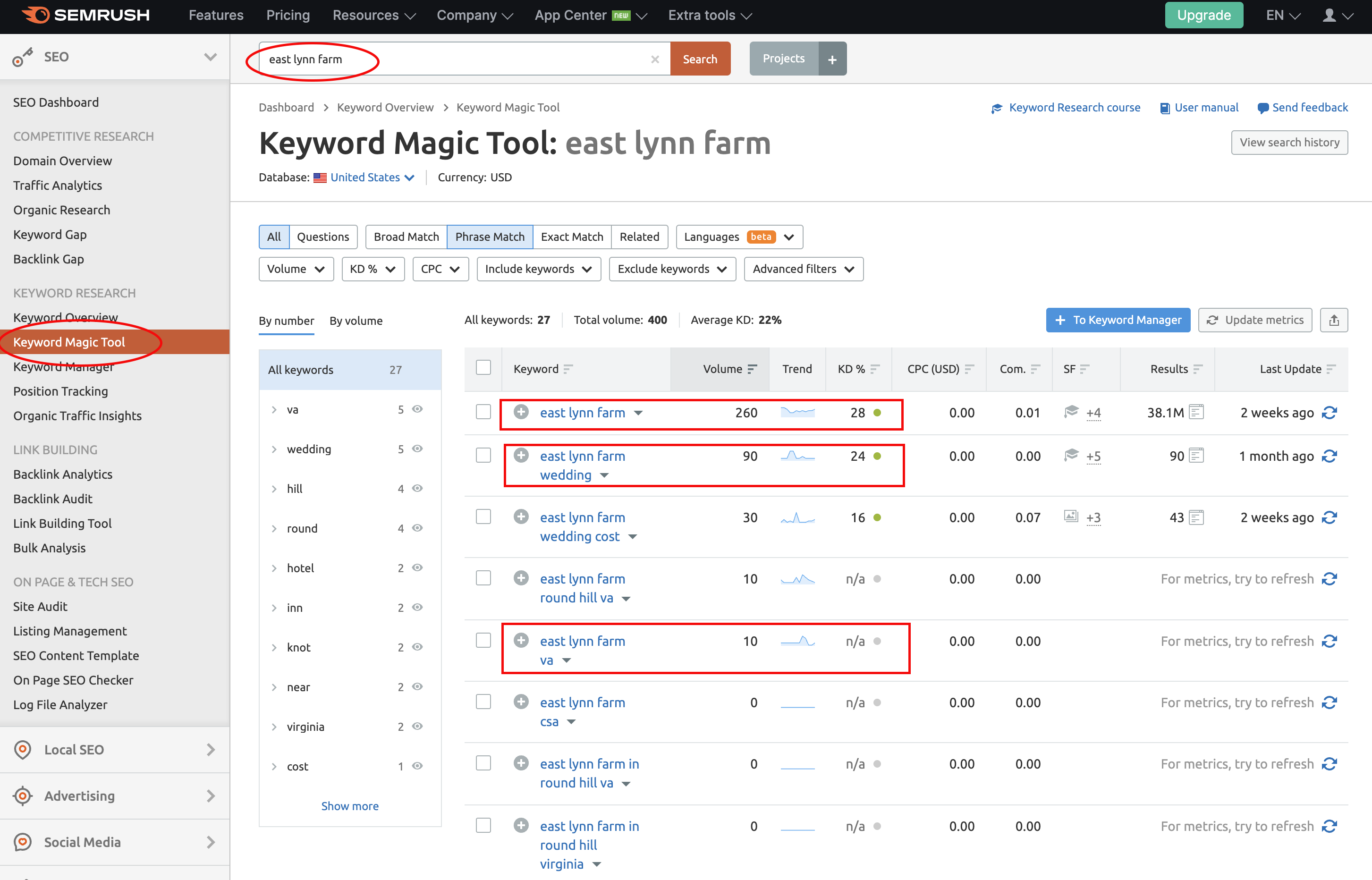
2. Use your keyword at the beginning of the blog post.
Your keyword should clearly be stated in the very first sentence of your blog. I generally like to use a keyword 2-3 times throughout my post. Each blog post should be at least 300 words long. If you can start a blog post with your exact keyword, it’s even better. In the example below, my keyword appears in the very first sentence, however, it would have been even better for the blog post to start with something along the lines of “This East Lynn Farm wedding was…”.
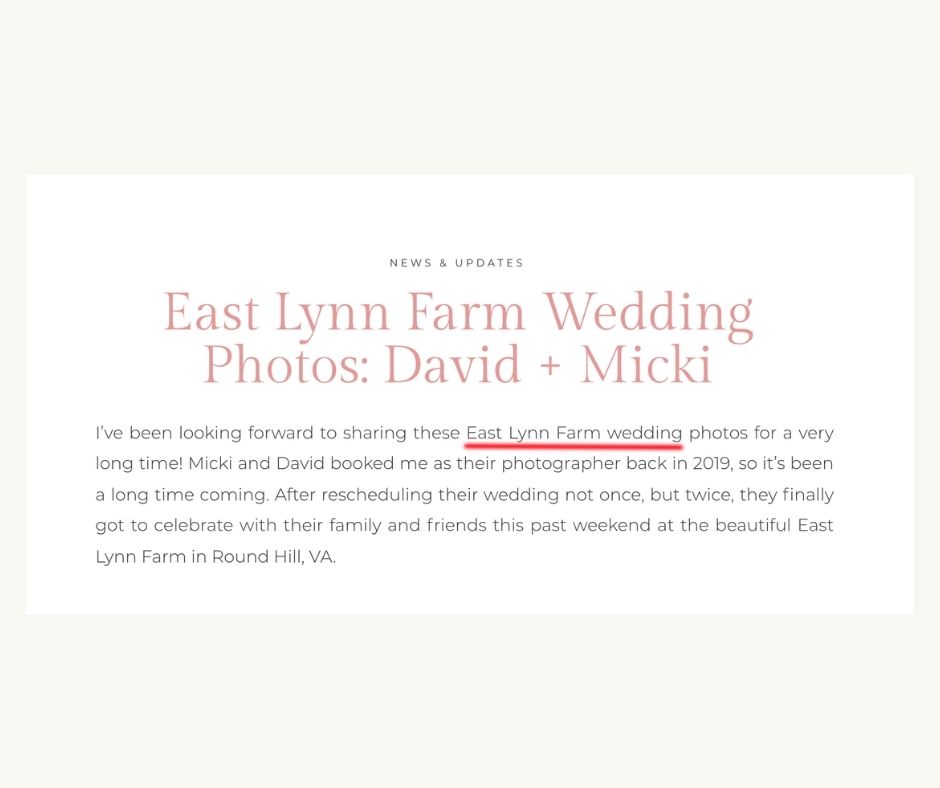
3. Use the keyword at the beginning of your blog title.
Notice that I didn’t title my blog post “David & Micki’s Wedding at East Lynn Farm”. Instead, I titled it “East Lynn Farm Wedding Photos: David + Micki”. What are the first words the title starts with? “East Lynn Farm”, exactly! Why? Because according to Semrush, 260 people are searching for that particular keyword each month.
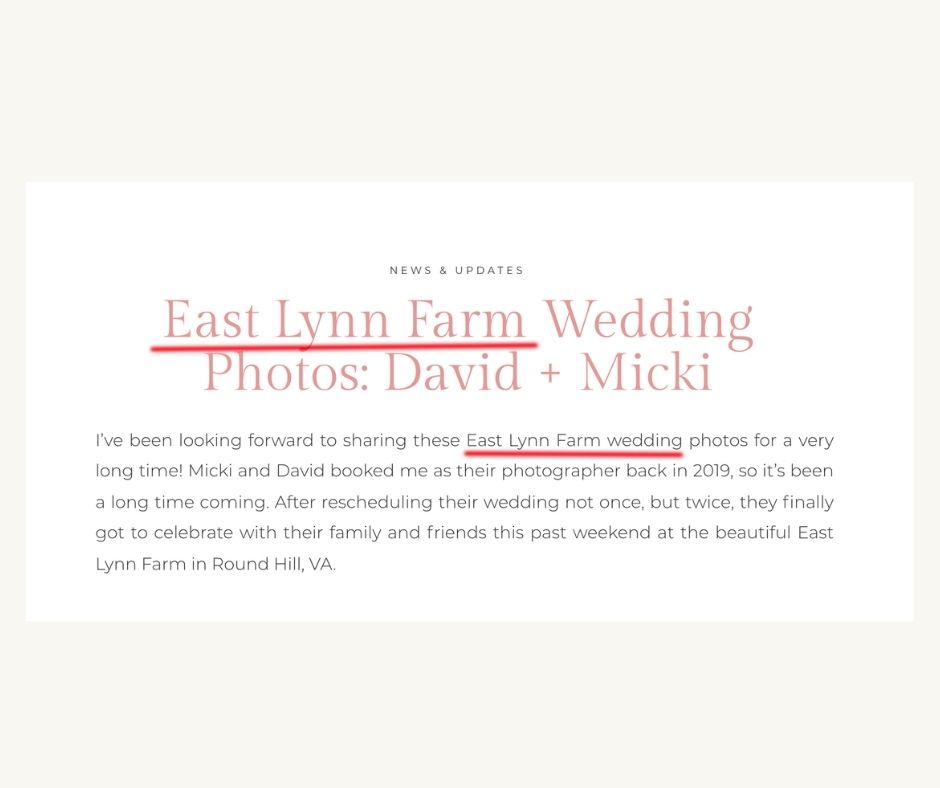
4. Use your keyword in your image name.
When you export your blog images from Lightroom (or if you use a program like BlogStomp like I do), make sure to rename them using your keyword. Here’s what my BlogStomp folder looks like. This is very helpful when someone searches for something on Google and looks at the images that pop up. Google can’t read photos, it can only read text, which is why it’s so important to rename your pictures.
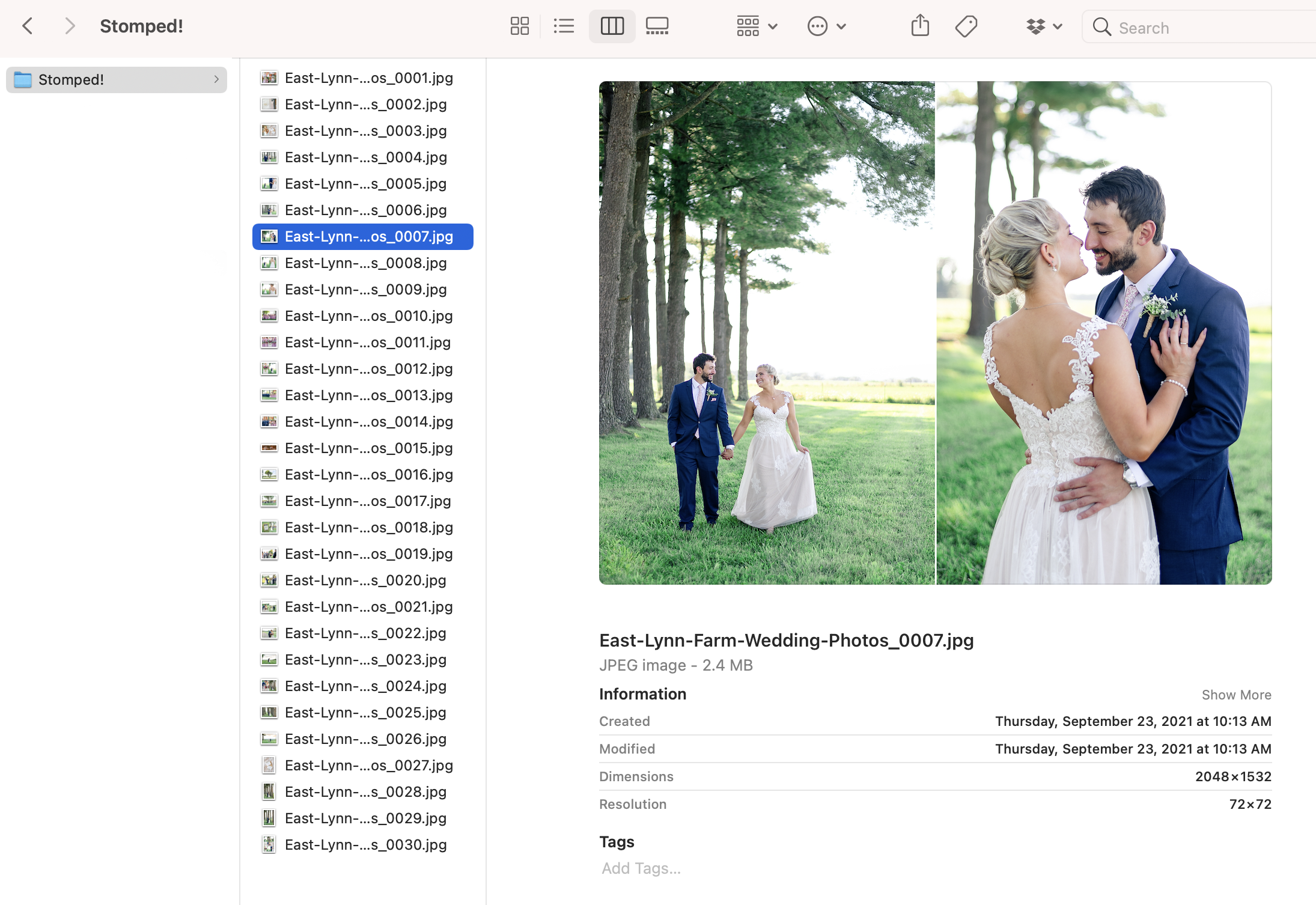
5. Use Alt Text.
Using Alt Text for images is huge if you want your photos to show up in Google searches. What should your Alt Text be? It should describe what your image is about, but it should also incorporate the keyword you want to rank for. If possible, keep your Alt Text under 5-6 words.

Bonus Tip!
Add your brand name at the end of every blog post or page on your site. This doesn’t help with SEO, but it does help increase your brand authority, as well as establish the like, know, and trust factor. Here’s why! The more times that someone sees your name pop up in searches, the more trust they are going to build with your brand. Let’s say a couple is searching for East Lynn Farm and they see “East Lynn Farm Wedding Photos: David + Micki | Alina Thomas”. Then they look at a different venue online and then see “Venue Name: Bride & Groom’s Wedding | Alina Thomas”. If they see your name pop up a few times, they’ll be more likely to look you up.
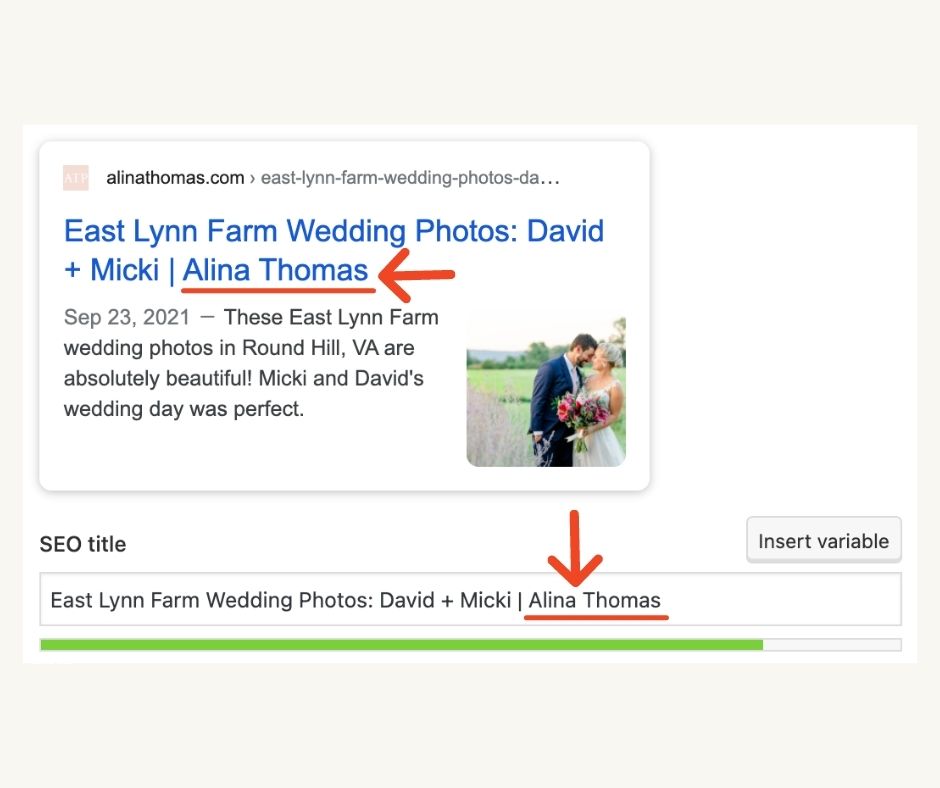
I hope this has been beneficial to you as you learn how to optimize blog posts for SEO!
